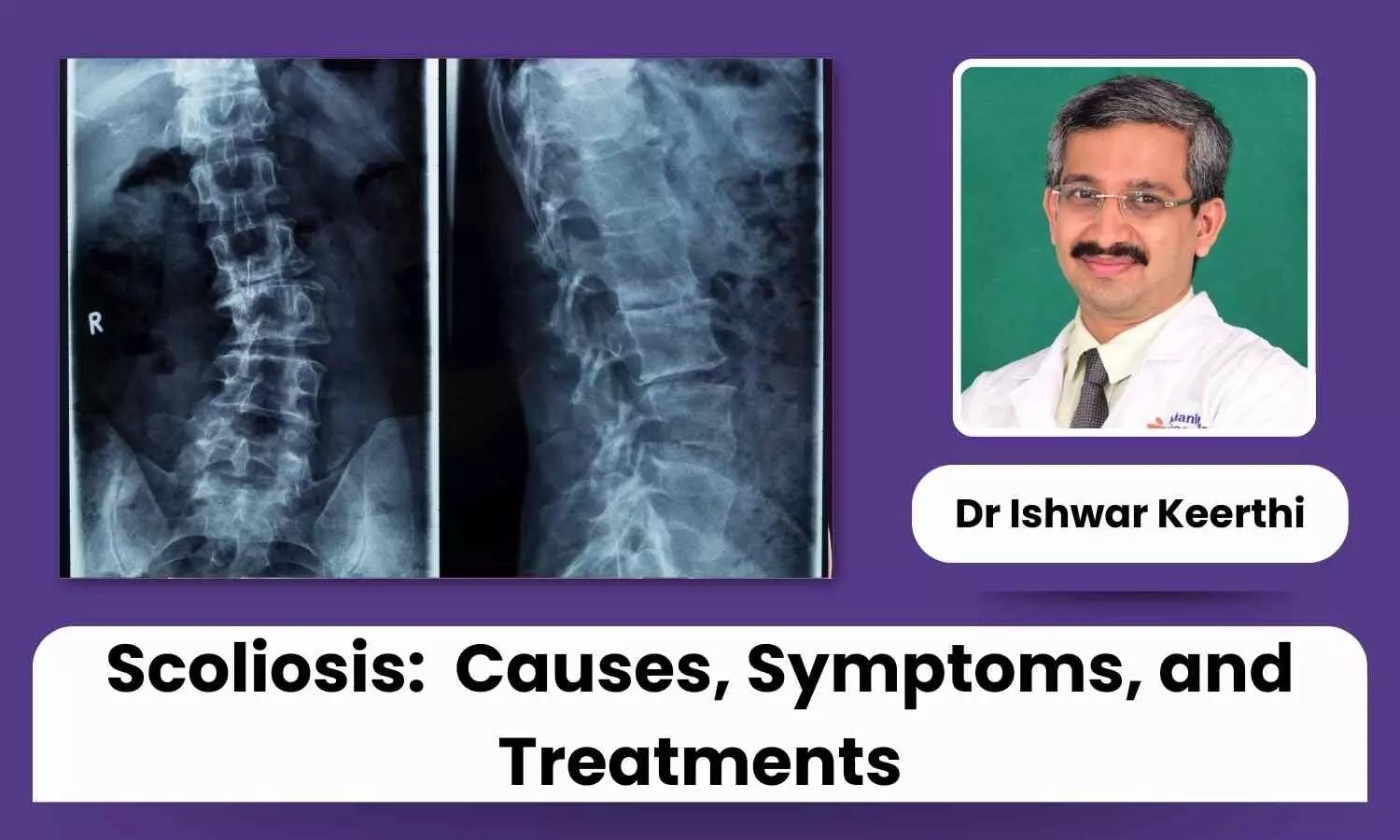Scoliosis: A Comprehensive Overview of Causes, Symptoms, and Treatments - Dr Ishwar Keerthi

Scoliosis, often referred to as the Cinderella in the field of orthopaedics, is a condition that has been known since ancient times. Hippocrates first described scoliosis in the fifth century BC, and later, Galen (131-201 AD) coined the terms scoliosis, kyphosis, and lordosis to describe various spinal deformities. Scoliosis is defined as an apparent lateral curvature of the spine. In reality, it is a triplanar deformity involving lateral, antero-posterior, and rotational components.
Symptoms of Scoliosis
The Scoliosis Research Society (SRS) defines scoliosis as a lateral curvature of the spine greater than 10° as measured by the Cobb method on a standing radiograph. Scoliosis often develops during the growth spurt before puberty and can vary in severity. The symptoms of scoliosis include:
Uneven Shoulders: It's possible for one shoulder blade to stand out more than the other.
Uneven Waist: One hip may be higher than the other.
Body Leaning to One Side: There may be a noticeable leaning of the entire body to one side.
Prominent Ribs on One Side: Due to the rotation of the spine, ribs may stick out more on one side.
Back Pain: Although not always present, back pain can be a symptom in some individuals.
Difficulty Breathing: In severe cases, the curvature can reduce the amount of space within the chest, making it difficult for the lungs to function properly.
Types of Scoliosis
Determining the type of scoliosis is crucial for planning treatment. The main types include:
Idiopathic Scoliosis: The most common type, especially in adolescents, with no known cause.
Congenital Scoliosis: Caused by a defect present at birth that affects the development of the bones of the spine.
Neuromuscular Scoliosis: Associated with neuromuscular conditions such as cerebral palsy or muscular dystrophy.
Degenerative Scoliosis: Occurs in adults as a result of the spine's aging-related deterioration.
Severity and Progression
The severity and progression of the curvature are critical in deciding the treatment approach. Curves less than 40 degrees can often be managed non-operatively, while those greater than 40 degrees in adolescents, especially during growth spurts, may require surgical intervention. The pattern of the curve, its rigidity, and the patient's skeletal age are also important factors to consider.
Treatment Methods
Non-Operative Treatments
- Observation: Mild curves (less than 20 degrees) are monitored every 6 to 12 months. Skeletally mature patients with curves less than 20 degrees usually do not require further evaluation.
Bracing: Used for curves between 20 to 40 degrees in growing children. The goal of bracing is to stop the curve from continuing to progress. Initially, braces were worn for 23 hours a day, but now part-time bracing (about 16 hours a day) is common. If the curve shows significant progression, full-time bracing may be recommended.
Surgical Treatments
Surgery is considered when:
- Curves exceed 50 degrees or 40 degrees in skeletally immature patients.
- There is progression despite bracing (5 degrees per year or more).
- Patients cannot tolerate bracing.
- Presence of pain, respiratory issues, neurological involvement, or cosmetic concerns.
The primary goals of surgery are to halt the progression of the deformity, alleviate pain, and achieve maximum correction with minimum risk. This often involves spinal fusion and the use of instrumentation like pedicle fixation to stabilize the spine.
Special Considerations for Congenital Scoliosis
Congenital scoliosis, caused by vertebral anomalies, presents unique challenges. Early diagnosis and understanding the natural history of the deformity are crucial. Treatment aims to achieve as straight a spine as possible by the end of growth without compromising neurological function. Early surgical intervention may prevent significant deformity later.
Screening and Prevention
Preventing severe scoliosis through early detection is a major focus. Since 1984, the American Academy of Orthopaedic Surgeons (AAOS) and the Scoliosis Research Society (SRS) have endorsed school screening for early detection. Early identification of scoliosis allows for timely intervention, which can prevent the need for surgical correction later.
In conclusion, scoliosis is a complex condition with a range of symptoms and treatment options. Understanding the type and severity of the curve is essential in planning effective management strategies, from observation and bracing to surgical intervention. Early detection through screening can play a significant role in preventing severe deformities and ensuring better outcomes for patients.


